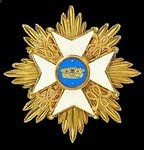This is the third set of Spanish cavalry flags commissioned by Lewis Simpson-Jones this summer. As I explained previously, I recreated the cavalry standards and guidons from verbal descriptions in a Spanish source, along with some rather poor 18th century images.
First raised 1735 as Real de las Reina Dragones. 12 companies strong.
Service:
1742: To Italy
1743: Battle of Campo Santo
1745: Sieges and capture of Seravalle and Tortona; occupation of Piacenza and Parma; capture of Pavia; battle of Bassignano; siege and capture of Alessandria; attack on Cassale di Monferrato
1746: Attack on Codogno; battle of Piacenza; battle of Rottofreddo; occupation of Oneglia, Nice and Exiles
1748: Back to Spain
Seven Years War:
1757: Stationed at Rivera
1758: To Merida then Andalucia
1760: To Jeréz de la Frontera
1762: On the way to the planned invasion of Portugal; by April at Ciudad Rodrigo where a total of 10,000 troops had assembled. By June the whole regiment was at Gallegos. August at the siege of Almeida, which capitulated 25th August. September invaded Portugal and at the capture of Salvatierra 9th September. October 1st at an encounter with the enemy at Sarcedas. October 26th at the siege of Elvas and Campo Mayor. November at Montijo at end of hostilities.
And this was probably the uniform in the Seven Years War:























